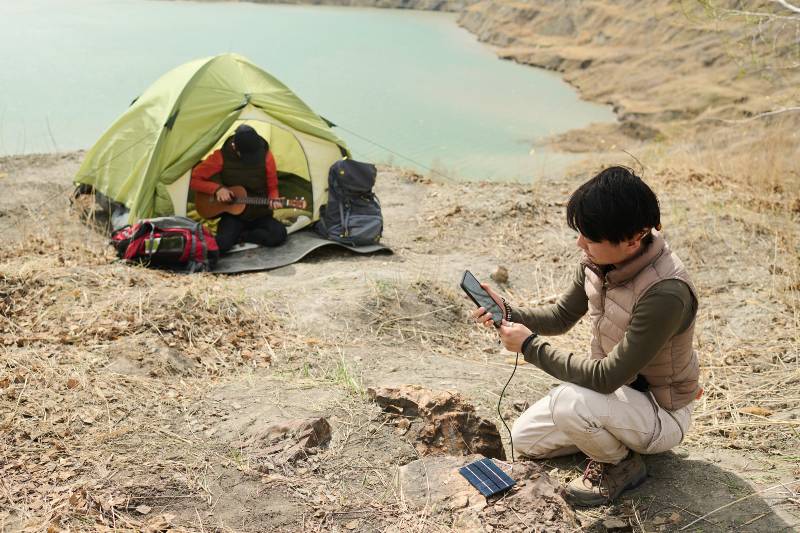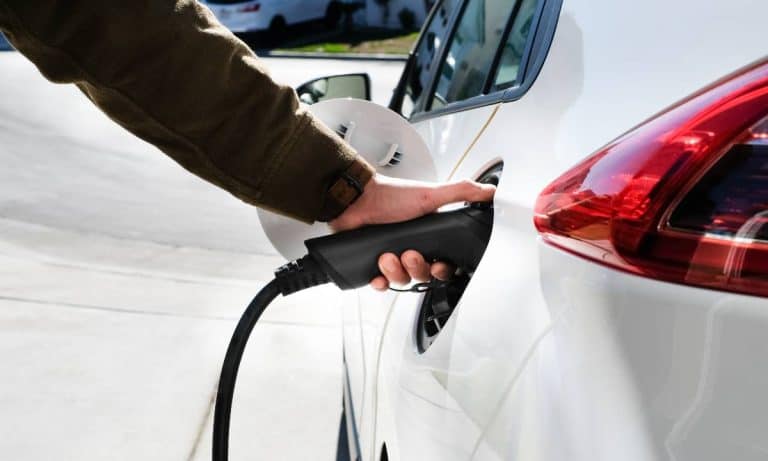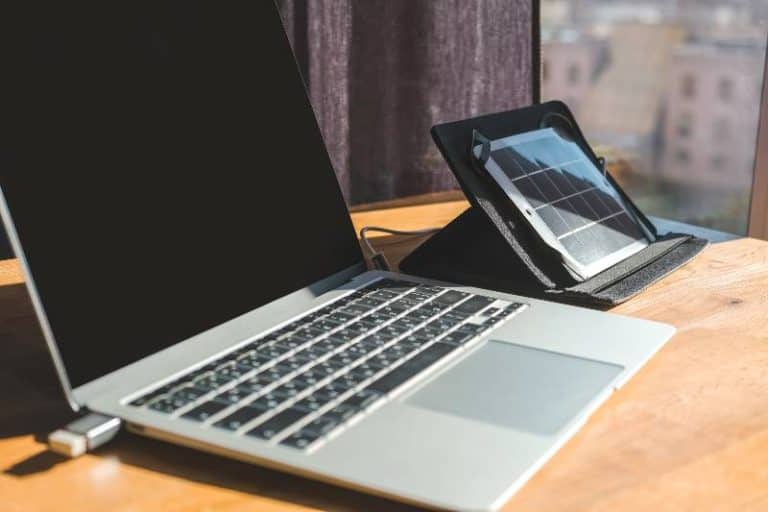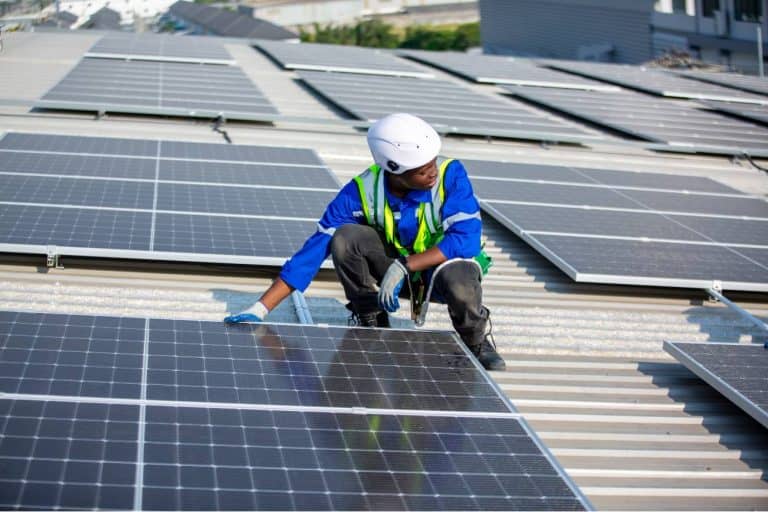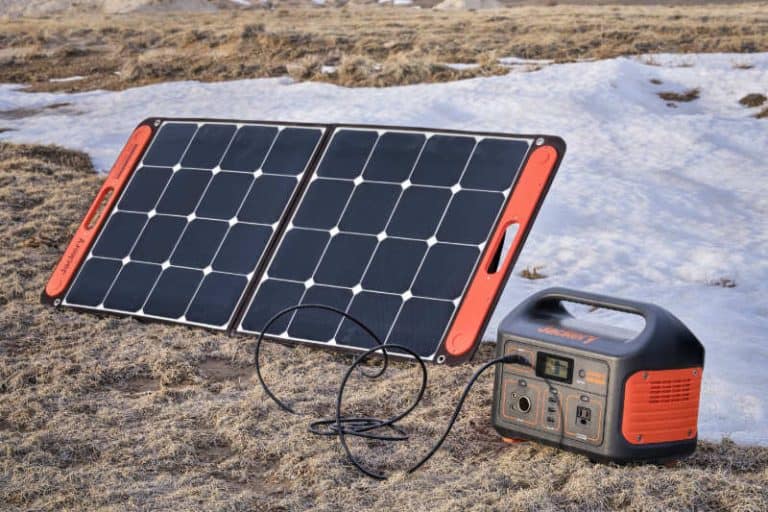Can a Solar Panel Charge a Power Bank and Should You Do it?
There is a lot of debate about whether or not you can charge a power bank with a solar panel. Some people say it works great, while others say it doesn’t do anything. So, what’s the truth? Can a solar panel charge a power bank? In this blog post, we will answer all of your questions and help you decide whether or not using solar panels to charge your power bank is right for you!
While solar panels are most commonly used to generate electricity for homes and businesses, they can also be used to charge power banks. A lightweight, portable solar panel can be attached to a power bank, providing a renewable and environmentally friendly way to keep the power bank charged.
Key Takeaways
- Always charge your device first before charging the power bank when charging a power bank, it’s crucial to keep this in mind.
- Before attempting to charge another device using your device, you should make sure that it has adequate battery life to do so. Otherwise, problems may arise for both devices, possibly resulting in damage.
- It’s crucial to think about your needs while selecting a power bank. A smaller capacity will do if you need something portable and portable that you can carry with you.

How Does a Solar Panel Charge a Power Bank?
A solar charger is a device that converts sunlight into electrical energy that can be used to power small electronic devices. Solar chargers typically have one or more solar panels, which are made of materials that absorb and store solar energy. When the solar panels of a solar charger are exposed to direct sunlight, they will produce the maximum amount of electricity.
The generated electricity can then be used to charge a power bank via its external USB ports. To maximize the charging efficiency, it is important to ensure that the solar panels are positioned directly in the sun and that there is no shading from objects such as trees or buildings.
Moreover, it is also worth noting that the battery capacity of a power bank will determine how long it can be powered by a solar charger.
For example, a power bank with a capacity of 10,000 mAh will require approximately twice as much time to charge as a power bank with a capacity of 5,000 mAh. Nevertheless, using a solar charger is an eco-friendly way to keep your devices powered up when you are on the go.
Things to Consider When Charging a Power Bank
When you’re out and about, a power bank can be a lifesaver. Power banks are portable chargers that you can use to recharge your phone or tablet when you’re out in the world. To make sure you’re getting the best experience from your power bank, it’s important to know how to charge it properly. Here are some things to consider when charging one:
Make sure your device has enough battery
When charging a power bank, it is important to remember that the first step is always to charge your device before charging the power bank itself. You want to make sure that your device has enough battery life before trying to charge another device with it because this could cause problems for both devices and potentially lead to damaging them.
You will need to determine how long it will take to charge your power bank
The length of time it will take to charge your power bank will also depend on the capacity of the power bank. A larger capacity power bank will take longer to charge than a smaller capacity power bank. To determine how long it will take to charge your power bank, consult the user manual that came with your power bank.
Make sure it’s turned off
One thing to keep in mind when you’re charging a power bank is to make sure it’s turned off. If it’s left on, it can overheat and potentially damage the battery. To charge it properly, simply connect the power bank to a USB port or AC adapter and let it do its thing.
How Long Does It Take to Charge with a Portable Solar Panel?
Assuming your solar power bank was fully discharged and you’re exposing it to full sunlight, on average it will take your solar power bank between 25-50 hours to charge. To maximize your device’s charging capabilities, be sure to expose the solar panel to direct sunlight as much as possible. And remember, the environmental conditions also play a role in how quickly your device charges – for example, if it’s a cloudy day, it will likely take longer to charge than on a bright, sunny day. So if you’re ever in doubt, give it some extra time in the sun just to be safe.
Types of Power Banks – Size, Features, Capacity
If you’ve ever been stuck with a dead cell phone, you know how frustrating it can be. Power banks are a great way to ensure that your phone (or other devices) always has power. But with so many options on the market, it can be hard to know which one to choose.
Power banks come in a variety of sizes and capacities. The size is measured in milliampere-hours (mAh). The most common capacities are 5000 mAh, 10,000 mAh, 20,000 mAh, 40,000 mAh, and 50,000 mAh. Some of the most powerful power banks can provide over 180,000 mAh!
In addition to size and capacity, power banks can also have added features like lighting and the ability to charge multiple devices at once. They may also have a variety of connectors to charge other devices besides your smartphone.
When choosing a power bank, it’s important to consider what you’ll be using it for. If you need something small and lightweight that you can take with you on the go, then a smaller capacity will suffice. However, if you’re looking for something to use during a camping trip or extended power outage, then you’ll want something with a higher capacity.
No matter what your needs are, there’s a power bank out there that’s perfect for you. So don’t be caught without power again – make sure to pick up a power bank today!
Other Names Used for Power Bank
Other names for power banks include portable chargers, battery bank, backup batteries, and fuel cells. These are used to charge mobile phones, laptops, and other electronic devices without being connected to the mains. They are usually powered by lithium-ion batteries and can be recharged via a USB port. Some power banks also come with built-in solar panels, which can be used to recharge the battery.
How to Charge a Power Bank?
Wall Outlet (socket)
Charging a power bank is a relatively simple process, but there are a few things to keep in mind to ensure that it is done properly. First, check to make sure that the power bank is compatible with the wall outlet you will be using.
Some power banks can only be charged via USB, while others may require a specific type of adapter. Once you have confirmed that the power bank can be charged via the wall outlet, simply plug it in and wait for the indicator light to show that it is charging. Depending on the size of the power bank, it may take several hours to reach a full charge. Once the power bank is fully charged, unplug it from the outlet and store it in a safe place until you need it.
Solar Power Banks – Secondary Power Source
Solar power banks are an increasingly popular way to keep your devices charged while on the go. But how do you charge a solar power bank? Here are a few simple steps:
First, find a sunny spot to place your power bank. The more direct the sunlight, the better. Then, connect your device to the power bank using the provided cables. Finally, allow the power bank to charge for several hours.
If you’re in a hurry, you can also charge your solar power bank using a standard outlet. Just connect the power bank to an outlet using the provided adapter, and let it charge for a few hours.
With a solar power bank, you’ll never have to worry about being stuck with a dead phone or tablet again. So next time you’re planning a road trip or hiking adventure, make sure to pack a solar power bank!
Can You Charge in Indirect Sunlight?
The answer is yes, but it will be ineffective and take much longer. When sunlight hits a solar panel, the photons interact with the electrons in the silicon cells to create an electrical current. However, if the light is not direct, fewer photons are hitting the cells, which means less charging. It can take up to twice as long to charge a device in indirect sunlight than it would in direct sunlight. So if you’re trying to top off your power bank while you’re indoors or under cloudy skies, you may want to plug it into the wall instead.
What Is the Best Time of Day to Charge a with a Solar Panel?
Solar panels or solar power banks are devices that store energy from the sun in order to provide electrical power to devices or appliances. They are most effective when they are able to charge during peak sunlight hours, which is typically early in the morning, when the sun is at its highest.
This will allow the solar panels or solar power bank to collect the most energy possible from the sun. Solar panels or solar power banks can also be charged throughout the day, as long as there is enough sunlight available. However, charging early in the morning will provide the best results.
Benefits of Charging a Power Bank with a Solar Panel
Flexible charging locations
Solar panels offer a flexible way to charge your power bank. You can place the panel in direct sunlight, or you can use an induction charger that doesn’t require direct sunlight. This means that you can charge your power bank anywhere there’s daylight, making it easy to keep your devices charged on the go.
Portable
Solar panels are a great way to generate portable power. You can use them to charge your power bank while you’re away from home, or you can use them to directly charge your devices. This makes solar panels an ideal solution for people who are often on the go.
Common Issues Charging Battery Packs from Solar
Solar panels are a great way to keep your devices charged, but they can also shorten the lifespan of your battery pack. This is because solar panels put stress on the battery cells, which can cause them to degrade over time. If you plan on using your power bank regularly, it’s important to choose one with high-quality cells that can withstand the stress of being charged by a solar panel.
How to Prolong the Life of Your Power Bank
To prolong the life of your power bank, it’s important to charge it regularly. This will help keep the battery cells in good condition and prevent them from degrading. It’s also important to discharge your power bank completely before charging it again to ensure that the battery cells are evenly charged and prevent them from overcharging. Additionally, it’s important to store your power bank in a cool, dry place to prevent the battery cells from degrading.
How to Choose the Right Portable Solar Charger?
Portable solar chargers are a great source of power when you’re on the go. They’re lightweight and compact, so they can be carried around in your backpack or purse. And if you’re going away for more than a few days, a portable solar charger can provide a backup supply of power for your cell phone, tablet, or other electronic devices.
But there are many different types of portable solar chargers on the market today — how do you know which one is right for you? Here are some things to consider:
1) How much power do you need?
The first step in choosing the right portable solar charger is figuring out how much power you’ll need. You should be able to find out this information by reading product reviews or talking to your friends who have used these devices before.
2) How long do you plan on being away from an outlet?
The next step is determining how long you’ll be away from an electrical outlet so that you don’t end up buying something that won’t last long enough for your trip. If it’s just one night at camp, then there’s no need to buy anything too expensive or powerful; but if it’s going to be longer than that, then it might make sense to buy a more powerful one.
3) What Types of Devices Do You Want to Charge?
This is one of the questions that come to mind when shopping for a portable solar charger because there are so many different sizes and shapes available on the market today.
If all you want is something simple that will charge up your phone or tablet then you’ll probably want something small enough that it doesn’t take up much space in your bag or pocket. However, if you want something that can also charge larger devices such as laptops then you’ll need something bigger with more wattage. Higher wattage means that you can charge more devices: higher wattage = more power.
Charing Power Bank with Portable Solar Panel FAQs
Can you charge power bank with solar
Many people wonder if they can charge a power bank with solar panels. The answer is yes – solar panels can be used to charge a power bank and restore its power! A lightweight, compact, and long-lasting solar panel can keep your power bank charged even if there is no nearby power outlet or electricity supply for hours or even days.
This makes solar panels a great option for charging a power bank when you’re camping, hiking, or otherwise away from an electrical outlet. Plus, using solar energy to charge your power bank is environmentally friendly and can help you save money on your electric bill. So why not give it a try? You may be surprised at how easy and convenient it is to charge your power bank with solar panels.
Can you connect a solar panel to a battery
Solar panels are a great way to generate renewable energy, but it’s important to use them safely. One common question is whether you can connect a solar panel directly to a battery. The answer is no – doing this can damage the battery.
Instead, you should connect both the battery and the solar panel to a solar charge controller. This device will regulate the flow of electricity, preventing damage to the battery.
So if you’re wondering how to connect a solar panel to a battery, remember to use a charge controller in between. This will help to keep your system safe and reliable.
Can you convert battery power to solar power
Did you know that you can convert battery power to solar power? Yes, there are available appliances that do this! For example, The SunMod kit, which includes a 4.8V flexible solar cell with pre-soldered metal connectors, can take any device powered by AA or AAA batteries and turn it into one that uses the sun’s rays. This is a great way to save money and be more eco-friendly!
Conclusion
Solar power is becoming more and more popular and with good reason. It’s a renewable resource that can help reduce our reliance on fossil fuels, plus there are plenty of solar-powered products on the market that make going solar even easier.
If you’re thinking about making the switch to solar energy, now is the time! Solar charging is a great way to reduce your carbon footprint, environmental impact and save money on your electric bill.
We hope this article has answered all of your questions about using a solar panel to charge a powerbank. If you have any other questions, don’t hesitate to reach out!
